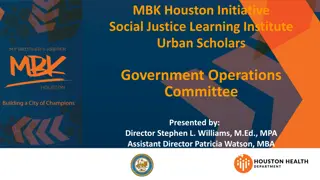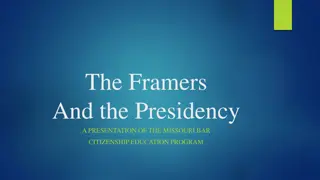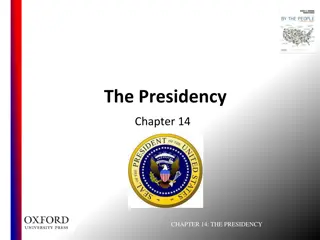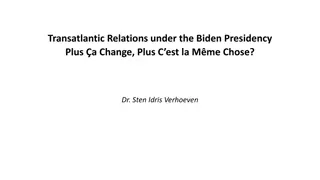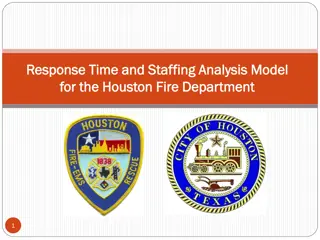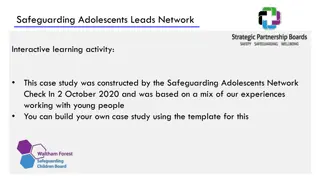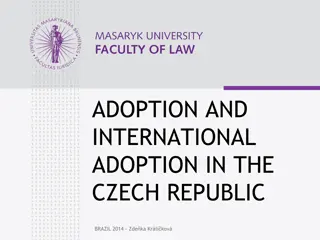The Lone Star Republic: Sam Houston's Presidency Challenges
During Sam Houston's presidency in the Lone Star Republic, he faced various challenges such as budget constraints, threats of invasion from Mexico, and annexation by the United States. Houston implemented cost-cutting measures, tried to establish peaceful relations with Native Americans, and dealt with Mexican invasions in Texas. The Archives War in Austin highlighted tensions over the government's capital and archives. Despite these challenges, Houston's leadership shaped the republic's trajectory during a tumultuous period.
Download Presentation

Please find below an Image/Link to download the presentation.
The content on the website is provided AS IS for your information and personal use only. It may not be sold, licensed, or shared on other websites without obtaining consent from the author. Download presentation by click this link. If you encounter any issues during the download, it is possible that the publisher has removed the file from their server.
E N D
Presentation Transcript
Sam Houston defeated David G. Burnet for the presidency. Houston disliked Lamar s policies and wanted to undo the damage. The major issues during Houston s second term were: The budget Threat of invasion from Mexico Annexation by the United States
Houston eliminated dozens of government positions and cut the size of the navy. He tried to sell the navy ships, but angry citizens prevented the sale. Despite these attempts to cut costs, the debt of the republic increased, largely due because of the high interest that had to be paid.
Houston also tried to renew peaceful and fair dealings with Native Americans. In a letter, Houston wrote: Neither the Indians nor the whites shall pass into the territory of the other without lawful permission should a white man kill an Indian or commit any crime upon an Indian on his property he shall be punished by laws of the republic. Treaties signed with various Native American groups ensured a period of calm for several years.
In March 1842 a Mexican army of about 500 soldiers, commanded by General Rafael Vasquez, invaded Texas and occupied San Antonio, Goliad, and Refugio. Although Vasquez withdrew after several days, many Texans panicked. President Houston declared a public emergency and tried to save the government archives, or official documents, by moving them from Austin to Houston.
Many Austin residents suspected that Houston intended to move the capital from Austin permanently. When government officials tried to move the archives, some Austin residents, led by Angelina Eberly, fired on them. This skirmish, called the Archives War, ended with the archives- and the capital remaining in Austin.
In September 1842, Mexican forces of about 1,400 invaded Texas again and occupied San Antonio. They were led by General Adrian Woll. After some heavy fighting, Woll s army was driven out of Texas. The Mexican army trapped Captain Nicholas Dawson. Dawson and about 35 volunteers were killed.
The Woll invasion angered Texans and the citizens demanded that President Houston take action. In November 1842, Houston ordered General Alexander Somervell and a militia of 750 to patrol the area from San Antonio to Laredo. When Somervell's forces reached Laredo, they found no signs of the Mexican army, so Somervell ordered his soldiers back to Gonzales.
About 300 soldiers did not agree with this decision and instead marched, under Colonel William S. Fisher, to the Rio Grande and attacked a Mexican town of Mier. The Texans expected an easy victory, but surrendered after 2 days of fighting.
The Mexican army began to march their captives to Mexico City, but the Texans overpowered the guards and escaped. The Texans lost their way in the mountains and some died of starvation and exposure. Mexican troops recaptured the survivors about a week later. Santa Anna ordered every tenth Texan executed as punishment for their escape attempt.
To determine which men would be executed, the prisoners were ordered to draw beans from a jar. Those who drew black beans were shot; those who drew white beans were marched to prison in Mexico City.
Houston also had to deal with trouble that developed in East Texas from 1839 to 1844 near the old Neutral Ground Territory. The feud between the settlers- the Regulators and the Moderators had been fighting for several years. Each group had formed to keep law and order because there were few local officials available to do so.
As a result of the conflict, property was burned and several people were murdered. Local law enforcement tried but could not stop the feud. In August 1844, the situation worsened and spread to surrounding counties in Texas and Louisiana. Houston sent 600 soldiers into the area to bring about peace. Houston himself traveled there and reminded the settlers that they were all Texans and should not fight each other. He persuaded both sides to end the Regulator Moderator War.







